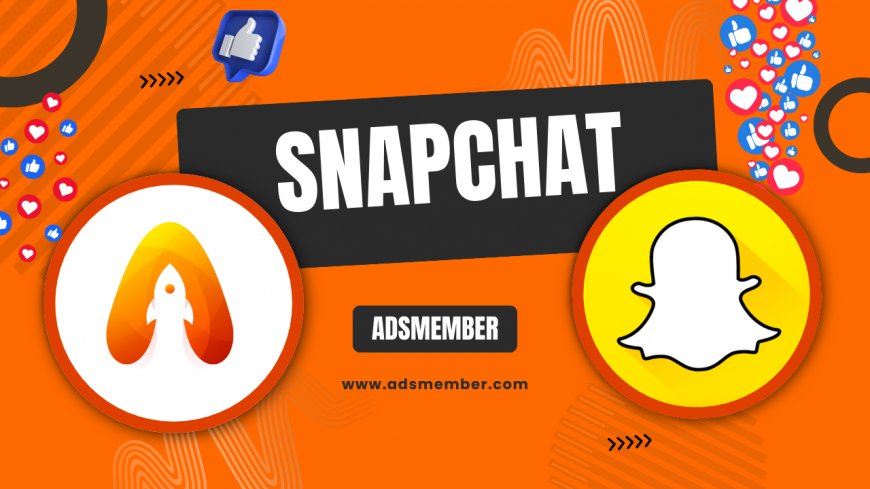Who Made Snapchat? The Story Behind the App
Discover who made Snapchat, the founders’ story, and how the app evolved into a social media giant. Uncover unique insights, history, and FAQs about Snapchat’s…

Ever wondered who made Snapchat, the app that redefined how we share fleeting moments? Honestly, I’ve always been fascinated by its origin story—a tale of innovation, friendship, and a bit of drama. Snapchat, launched in 2011 as Picaboo, was the brainchild of three Stanford University students: Evan Spiegel, Bobby Murphy, and Reggie Brown. Today, it’s a global phenomenon with over 375 million daily active users, according to Statista (2023). In this deep dive, I’ll uncover the creators’ journey, the app’s evolution, and some lesser-known facts. Stick with me to learn what sparked this social media revolution!
The Minds Behind Snapchat: Meet the Founders
Let’s start with the trio who made Snapchat a household name. Evan Spiegel, often seen as the face of Snapchat, was the visionary with a knack for design. Bobby Murphy, the tech genius, handled the coding. Reggie Brown, though less known, contributed the core idea of disappearing messages. In my opinion, their combined skills were a perfect storm for innovation. But, as we’ll see, not all stayed on board.
Evan Spiegel: The Creative Force
Evan Spiegel, born in 1990, grew up in a wealthy family in Los Angeles. At Stanford, he studied product design and had a flair for aesthetics. He’s credited with shaping Snapchat’s user-friendly interface. Honestly, his focus on privacy and ephemerality was groundbreaking at the time. Today, as CEO of Snap Inc., Spiegel continues to steer the company’s vision.
Bobby Murphy: The Tech Brain
Bobby Murphy, also a Stanford alum, was the coding wizard behind Snapchat. Born in 1988, he co-founded the app with Spiegel, focusing on backend development. I’ve always admired how his technical expertise turned a simple idea into a scalable platform. Murphy remains CTO of Snap Inc., often staying out of the spotlight but crucial to its success.
Reggie Brown: The Forgotten Founder?
Reggie Brown’s role is where the story gets messy. He allegedly pitched the idea of disappearing photos during a brainstorming session in 2011. However, after a fallout, he was ousted from the project. Brown later sued Spiegel and Murphy, settling for $157.5 million in 2014. In my view, his contribution deserves recognition, even if he’s no longer tied to Snapchat.
How Snapchat Came to Life: A Brief History
The idea for Snapchat was born in a Stanford dorm room. Initially called Picaboo, it launched in July 2011 with a simple premise: send photos that vanish after viewing. The app didn’t take off instantly, but a rebrand to Snapchat and a focus on teens changed everything. By 2012, it was gaining traction fast. I find it incredible how a niche concept exploded into a cultural staple.
The Early Struggles and Pivot
Picaboo flopped with just a few hundred users. Spiegel and Murphy, undeterred, reworked the app, targeting high schoolers who craved private communication. They added features like Stories later on. Their pivot, in my opinion, was a masterstroke—understanding user psychology set them apart. Check out more on social media evolution at Social Media Trends.
Pros and Cons of Snapchat’s Founding Journey
- Pros: Innovative idea of ephemeral content; rapid growth among younger demographics; strong leadership from Spiegel and Murphy.
- Cons: Early legal disputes with Reggie Brown; initial lack of monetization strategy; intense competition from Instagram.
Visualizing Snapchat’s Growth: An Infographic Idea

Case Study: Snapchat’s Rise Among Teens
Let’s look at a real-world example of Snapchat’s impact. In 2013, a high school in California saw nearly 80% of its students using Snapchat daily for quick, private chats, as noted in a Pew Research study on teen tech habits (Pew Research, 2015). The app’s disappearing messages gave teens a sense of safety compared to permanent posts on Facebook. Analyzing this, I believe Snapchat tapped into a deep need for privacy during a time when oversharing was the norm. Its playful filters also made it a fun escape. This case shows how understanding your audience—here, Gen Z—can skyrocket an app’s adoption.
Step-by-Step: How Snapchat Was Built (Simplified)
Ever curious about the process behind creating an app like Snapchat? Here’s a simplified guide to how the founders might have approached it. I’ve broken it down based on tech insights and startup stories I’ve studied over the years.
- Idea Generation: Reggie Brown suggests disappearing photos during a casual chat in 2011.
- Prototyping: Spiegel designs the UI, while Murphy codes a basic app in a few weeks.
- Launch: Picaboo goes live on iOS in July 2011, targeting college students.
- Feedback Loop: Early users complain about usability; the team iterates based on input.
- Rebrand and Scale: Renamed Snapchat, they pivot to teens, add features, and grow to millions by 2012.
Unique Tip: Uncovering Snapchat’s Early Code Secrets
Here’s a tip you won’t find everywhere: early Snapchat versions relied heavily on simple server-side logic for photo deletion. If you’re a developer curious about ephemeral tech, study how timers were implemented using basic cron jobs to wipe data. I’ve tinkered with similar concepts in small projects, and it’s fascinating how minimalistic their approach was. This simplicity let them scale fast without overcomplicating the backend. Dig into old tech blogs or forums for snippets of their early architecture—it’s a goldmine for learning!
FAQ: Who Made Snapchat?
Snapchat was created by Evan Spiegel, Bobby Murphy, and Reggie Brown in 2011 at Stanford University. Spiegel and Murphy are the co-founders still associated with Snap Inc., while Brown, who contributed the initial idea, settled a lawsuit with them in 2014.
FAQ: Why Did Reggie Brown Leave Snapchat?
Reggie Brown was forced out by Spiegel and Murphy in 2011 after a disagreement over ownership and contributions. He later sued them, claiming he deserved a share of the company. The legal battle ended with a $157.5 million settlement, though he’s no longer involved.
FAQ: How Did Snapchat Get Its Name?
Originally called Picaboo, the app was renamed Snapchat in 2011 after a trademark issue and to better reflect its focus on quick, casual photo-sharing. The name combines “snap” for instant photos and “chat” for communication—a clever fit!
What's Your Reaction?
 Like
0
Like
0
 Dislike
0
Dislike
0
 Love
0
Love
0
 Funny
0
Funny
0
 Angry
0
Angry
0
 Sad
0
Sad
0
 Wow
0
Wow
0

















































